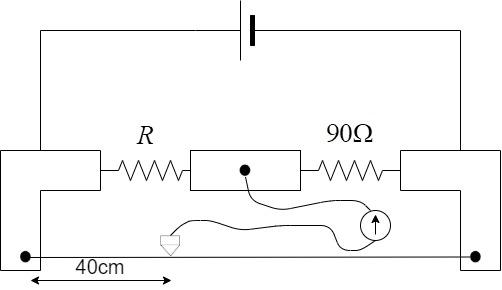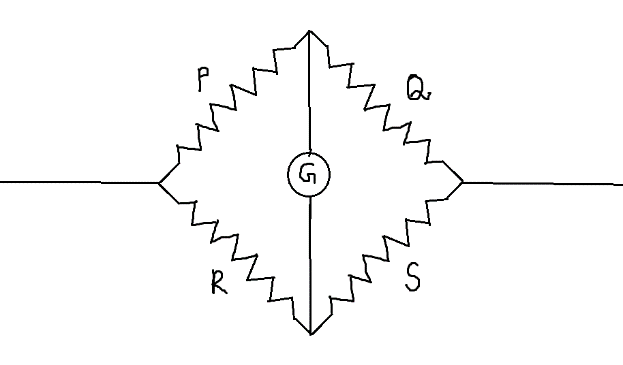Question
Question: During an experiment with the metre bridge, the galvanometer shows a null point when the jockey is p...
During an experiment with the metre bridge, the galvanometer shows a null point when the jockey is pressed at 40.0 cm using a standard resistance of 90Ω as shown in the figure. The least count of the scale used in the meter bridge is 1mm. The unknown resistance is:

A) 60±0.15Ω
B) 135±0.56Ω
C) 60±0.25Ω
D) 135±0.23Ω
Solution
The Metre Bridge is an arrangement derived from the Wheatstone’s network. The Wheatstone’s network is an arrangement of 4 resistors as shown:

The Wheatstone’s network is said to be balanced if the reading in the galvanometer becomes zero. This condition is possible when –
QP=SR
Complete step by step answer:
Step 1: Calculating the unknown resistance.
In a meter bridge, the ratio of the known resistance to the unknown resistance is equal to the ratio of the corresponding lengths.
If the galvanometer reading turns 0 when the jockey is pressed at a length l, the formula for finding the unknown resistance R –
SR=1−ll
where S – known resistance.
In this problem,
⇒S=90Ω ⇒l=40cm=0.4m
Hence, substitute these values to obtain the unknown resistance R –
⇒SR=1−ll ⇒R=S1−ll Solving, ⇒R=901−0.40.4 ⇒R=900.60.4=60Ω
Step 2: Finding the change in resistance
Let us consider the equation for unknown resistance in the meter bridge
R=S1−ll
To find the incremental value of change in resistance, we need to differentiate the equation with respect to length
⇒dldR=R(l1+1−l1) rearranging, ⇒RdR=ldl+1−ldl
Least count,dl=1mm=0.001m
Substituting in the formula, we get:
⇒RdR=ldl+1−ldl ⇒RdR=0.40.001+1−0.40.001 ⇒RdR=0.40.001+0.60.001=40.01+60.01 ⇒RdR=0.25Ω
Hence, incremental change = ±0.25Ω
Hence, the correct option is Option C, 60±0.25Ω.
Note: Students can, often, get confused between R and S in the formula. Always, note that the known resistance will be in the denominator as it is connected on the left. So, the known resistance S will be equivalent to (1-l).
